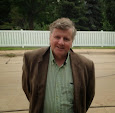 Last night I watched Ron Mann’s documentary Grass (1999), not so much a social history of marijuana in the United States as an exploration of the government’s attempt, over a roughly 70-year period, to make marijuana possession (and therefore, presumably, its use) a criminal offense of ever-escalating severity. His film is a marvelous compendium of newsreel footage, clips from educational scare films, period music, and feature film excerpts with references to the herb, from the largely unknown (at least to me) High on the Range (1929) to the well-known cautionary tale, Tell Your Children (1936) AKA Reefer Madness. While Mann, to his credit, reveals the extent of the government’s systematic propaganda campaign against marijuana, for which it has, apparently, spent billions upon billions of dollars over the past century or so, the question that remains unexplored in the film is why—why has the U. S. government spent billions and billions of dollars attempting to discredit an rather benign drug, certainly no worse in terms of wasteful cultural expenditure than alcohol?
Last night I watched Ron Mann’s documentary Grass (1999), not so much a social history of marijuana in the United States as an exploration of the government’s attempt, over a roughly 70-year period, to make marijuana possession (and therefore, presumably, its use) a criminal offense of ever-escalating severity. His film is a marvelous compendium of newsreel footage, clips from educational scare films, period music, and feature film excerpts with references to the herb, from the largely unknown (at least to me) High on the Range (1929) to the well-known cautionary tale, Tell Your Children (1936) AKA Reefer Madness. While Mann, to his credit, reveals the extent of the government’s systematic propaganda campaign against marijuana, for which it has, apparently, spent billions upon billions of dollars over the past century or so, the question that remains unexplored in the film is why—why has the U. S. government spent billions and billions of dollars attempting to discredit an rather benign drug, certainly no worse in terms of wasteful cultural expenditure than alcohol?
Perhaps the answer lies in the sort of behavior with which marijuana has been variously associated during the decades explored by the film, for instance, jazz and swing in the 1930s (racial “mixing,” or miscegenation), R&B in the 1950s (juvenile delinquency), psychedelic rock in the 1960s (“free love,” or sexual promiscuity), and the cults of the 1980s (Satanism and goth rock). In other words, the government's campaigns were as much about attacking marijuana as they were attempts to discredit or proscribe certain social behaviors, broadly understood as youthful insolence. As a Victorian—who held the key government position of “drug czar” for over 30 years—Harry J. Anslinger’s campaign against marijuana seems to have been motivated out of a hatred of the anti-Victorian forces and forms of modernism, of which the popular expression in the 1920s and 1930s was jazz and swing, represented by the Afro-American musician. It was therefore motivated out of racism (toward the black jazz artists of the 20s and 30s, but also toward the rock musicians of the 50s and 60s, e.g., Little Richard, Chuck Berry). It would seem that the government’s anti-drug campaign during those decades is roughly analogous to the idea of censorship. While censorship can operate at the level of production (as in the case of “prior restraint,” the prohibition of certain behaviors or practices, for instance), it can also operate before the production stage, meaning it makes certain thoughts literally unthinkable. Racial mixing, or miscegenation, is an example of such a forbidden thought during the swing era. In the rock era, John Prine’s song, “Illegal Smile,” is a wry critique of the sort of censorship that outlaws certain thoughts. Prine has said that the phrase, “illegal smile,” refers not only to the bemused look on a stoned person’s face, but also the “knowing smile” one exchanges with another when each one understands that a joke or reference has violated certain proscribed thoughts—the silent, non-verbal communication, in the form of a smile, that occurs between individuals living under the threat of punitive action. A video of his performance of the song is available here.
Black Sabbath, Sweet Leaf (1971)
Black Uhuru, Sinsemilla (1980)
Brewer and Shipley, One Toke Over the Line (1970)
Cab Calloway and His Orchestra, Reefer Man (1932)
Bob Dylan, Rainy Day Women #12 & 35 (1966)
Fraternity of Man, Don’t Bogart Me (1969)
Lil Green, Knockin’ Myself Out (1941)
John Prine, Illegal Smile (1971)
Bessie Smith, Gimme a Reefer (1933)
Steppenwolf, Don't Step on the Grass, Sam (1968)
The Toyes, Smoke Two Joints (1983)
Muddy Waters, Champagne and Reefer (1981)






